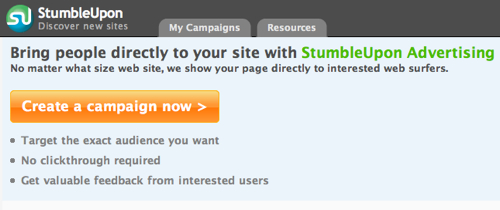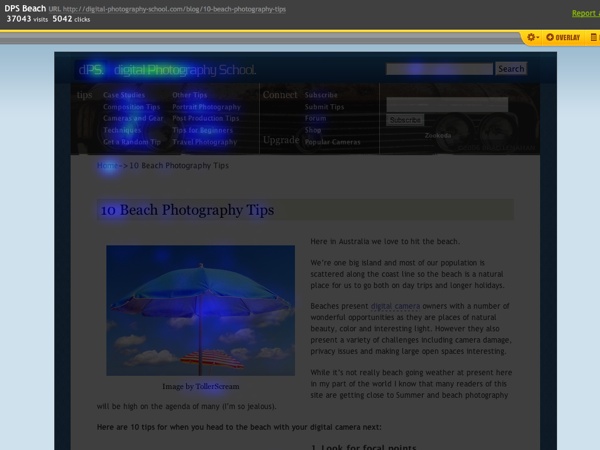It’s Day 18 in the
31 Days to Building a Better Blog Project and today your task is to develop a ‘Sneeze Page’ (or pages) for your blog.
One of the challenges that faces blogs that have been around for a while is that they end up with a wonderful collection of posts in their archives that are rarely read by readers.
Write 1 post a day for a year and you’ll have 365 posts in your archives - but if your blog is like the majority of blog it will only be the latest 10 or so posts that readers will see when they arrive on your blog.
The challenge therefore is to work out how to propel readers towards some of the best posts in your archives.
One solution is what I call a ‘Sneeze Page’.
A Sneeze Page is one that simply directs readers in multiple directions at once - back into your archives. Let me explain further by giving a few tips on how to write Sneeze Page and then examining how to strategically position them for maximum impact.
How to Write Sneeze Pages
Writing a Sneeze Page for your blog isn’t that difficult a concept really - in it’s most simple form it is simply a list of links looking back into your archives. However as I think back on how I’ve done it before there are a number of techniques that you might like to use.
1. Themed Sneeze Pages - these are posts or pages on your blog or site that revolve around a single theme. For example - on the front page of the newly designed ProBlogger you’ll now find a section called ‘Best of ProBlogger’ which has a tab in it titled ‘Darren’s Favs’. The five links in this section point to five new pages on ProBlogger which are in effect Themed Sneeze Pages (How to Make Money Blogging, How to Find Readers for Your Blog, How to Write Great Blog Content, Search Engine Optimization for Bloggers and Darren’s Recommendations).
These pages each break down the overarching topic or theme of the page into sub themes and then list off some of the key posts that I’ve written on the topic.
Interestingly - some of the posts that I link to are the central page for a series of posts (which are Sneeze pages in themselves - for example the page on writing content links to the 7 Days to Rediscovering your Blogging Groove series). As a result these pages have the potential to sneeze readers into hundreds of archived posts very quickly.
2. Time Related Sneeze Pages - a Sneeze page that is based around a defined period of time can be very effective. These ‘best of’ posts highlight your key posts from that period to either remind readers of previous posts that they might want to revisit or to highlight posts that they might have missed.
The period of time that you choose can really be anything from a year (here’s my best of 2006 at ProBlogger post) through to a month, week or even a weekend (ie a post that summarizes the posts from a weekend that those readers who don’t read your blog on a weekend might have missed).
3. Hot Comment Thread Sneeze Pages - I haven’t done this for a while but I used to occasionally compile a list of the posts in my archives that had comment threads on them that just wouldn’t die. This drove traffic back to engaging conversations, controversial debates and insightful discussions through my blog. It was actually a great traffic driver that worked quite effectively.
4. Series Sneeze Pages - as mentioned above - the introductory or summary post of a new series of posts can be an effective Sneeze Page. The best current example of this on ProBlogger is the central page for the 31 Days to Build a Better Blog project which will end up being a list of 31 posts from this blog as well as hundreds of reader submitted tips.
Go Beyond The ‘List’
One more quick tip on writing Sneeze Pages - don’t make them just a list of links. Readers will use them a lot more and follow your suggested links into your archives if you take al little time to introduce what the page is about and to describe what they’ll get when they arrive at the page. This little extra effort will mean your page is more useful and useable for readers.
Also resist the temptation just to drive traffic to your money making pages. While you can definitely include pages that contain affiliate links and well converting ads in your Sneeze pages it will be much better received by readers if the posts you highlight are truly your best and most useful work.
How to Strategically Position Your Sneeze Page
The key with Sneeze Pages is to position them in a way that will enable them to be seen and used by the maximum number of readers. On some occasions this will simply been posting them as normal posts on your blog (see discussion below on ‘posts vs pages’ and in other instances it will mean highlighting them throughout your blog in other key positions.
Obviously at ProBlogger I highlight a number of Sneeze Pages from my ‘Best of’ section (something that is working quite well) but in my previous design I had them positioned in my top navigation menus (again - this worked very well).
Another way to highlight these pages is to link to them in posts when you’re talking on an issue. You can do this either within the content itself as you write or at the end of posts as suggested further or related reading.
Posts or Pages?
Those of you who use a blogging platform like WordPress (or now MT 4.0) that have the ability to write pages (as opposed to posts) on your blog will have an interesting choice when it comes to how to present your Sneeze Pages.
I use both posts and pages depending upon their nature. For Sneeze pages that will be linked to prominently for a long time on my blog I tend to go with a page (as they don’t have dates on them that could ‘date’ the page. But for smaller recaps of time periods or hot threads I’ll publish them as posts that will appear on my actual blog.
An Example of a Blog which Sneezes Effectively
Before I send you off to create some pages let me highlight one blog that I see using this technique very effectively - Lifehacker.
Here are four recent examples:
Your Homework
It is time to head back to your blog and create a Sneeze post or page for your blog. Use any of the above methods (themed, dated, hot threads etc) or use one of your own. Head back to this thread afterwards to tell us how you did it (and feel free to link to it so we can see some more examples of what others are doing).


 StumbleUpon - StumbleUpon is a growing social bookmarking service that is used by many people around the globe. It is a service that many bloggers target to drive organic traffic to their blog - but one that also offers a means to advertise a website upon it.
StumbleUpon - StumbleUpon is a growing social bookmarking service that is used by many people around the globe. It is a service that many bloggers target to drive organic traffic to their blog - but one that also offers a means to advertise a website upon it. 


